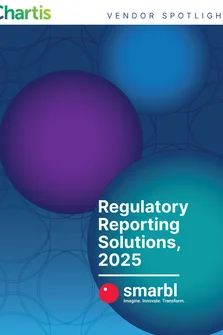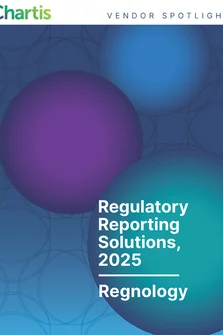<p>The financial crisis of 2008 was the largest global economic crisis since the Great Depression. It brought down major institutions such as Lehman Brothers and Bear Stearns, led to a rush to bail out many other banks, and revealed a plethora of flaws in the financial system. The response of the Basel Committee and the G20 was to introduce a set of regulations that aimed to overhaul the financial industry. The significance of Basel 3 cannot be overestimated. The measures will considerably increase the capital cushion banks must hold, impose major short-term costs on banks, and change the way banks manage themselves.</p>
<p>These regulations will force financial institutions to make considerable changes to the way they are run, because of the costs imposed not only by the increase in assets that have to be held, but also by the increased resources that many functions, but principally risk and compliance, will require to expand to meet regulatory ratios and reporting requirements. Financial institutions will need to perform more calculations and submit more data to regulators than ever before, while coming under greater pressure to raise capital, liquid assets, and collateral. With such an increase in regulations, the danger for many financial institutions is that the regulatory workload will consume an ever-greater proportion of resources, preventing functions such as risk and finance from pursuing business goals.</p>
<p>In preparing for Basel 3, financial institutions need to think not only of how they will comply with the regulations, but also how they will be able to adapt to the new environment without sacrificing the efficiency and performance of their business. Supporting the successful growth of the business should therefore remain a priority for firms, ahead of compliance. Financial institutions ought to consider how transitioning to Basel 3 can help them, not the regulators. To adapt to the pressure on resources and the impact of new regulations, financial institutions will therefore need to make a number of changes to improve their performance:</p>
<p>• Improve capital management – Capital is now a scarce resource. Firms need to use it as efficiently as possible. This means both ensuring regulatory compliance and continuing to use capital to price risk and to steer business activity.<br />
• Greater integration of numerous functions, especially risk and finance, and front and back offices – As well as helping compliance by enabling co-operation and information sharing, this will also aid key business goals, such as the introduction of risk-adjusted performance measures.<br />
• Implementation of enterprise-wide risk management, including for liquidity risk and counterparty credit risk – Basel 3 emphasizes the overlapping nature of risk and an enterprise-wide approach will aid both compliance and internal risk awareness.</p>
<p>These changes to systems, as well as the increase in calculations and data required by regulators, will require robust technology solutions to ensure the success and reliability of any Basel 3 strategy, and will help to ease resource pressures in the long run. Investment in technology now will pay dividends in the long-term by freeing risk and compliance personnel from regulatory duties, allowing them to focus on business goals, such as controlling the firm’s risk profile.</p>
<p>This report covers the specific technologies required for Basel 3 compliance and adaptation, including data models, flexible and real-time analytics, capital calculation engines, and specific technology support for risk and finance integration, liquidity risk and counterparty credit risk. This report covers leading practices in these technology areas, key attributes of necessary technology architecture, identifies the benefits of investing in sufficiently advanced functionality, and the pros and cons of “buy vs. build”.</p>
<p>The report also explains why financial institutions might want to consider a “horses for courses” approach. There is no perfect Basel 3 technology solution available on the market, especially as different financial institutions will have different requirements. For some financial institutions, tactical point solutions or best-of-breed technology components will be the most practical and effective solution or approach. For others, a “one-stop-shop” enterprise solution with comprehensive technology, data management, and functionality will be the best path to take. Which road to take will depend on the starting position and existing technical and organizational environment of the buyer.</p>
<p>In addition, the report covers the competitive landscape. As this is such an important market, it is unsurprising that many vendors have jumped on the “Basel 3 bandwagon” and are promoting “Basel 3 solutions”. While many vendors are making real, and innovative, improvements to their solutions, some vendors are just using Basel 3 as a marketing opportunity without making any significant enhancements to their technology solutions. This has created a feeling of confusion amongst risk technology buyers.</p>
<p>This report attempts to clear up this confusion and introduces Chartis’s RiskTech Quadrant™ to help demystify the market. The RiskTech Quadrant™ uses a comprehensive methodology of in-depth independent research and a clear scoring system to help explain which technology solutions meet the needs of various financial institutions. The RiskTech Quadrant™ does not simply describe one technology solution as the best Basel 3 solution; it has a sophisticated ranking methodology to explain which solutions would be best for buyers, depending on their implementation strategies.</p>
<p>Chartis has attempted to cover as wide a range of vendors as possible. This report covers Axiom SL, Fernbach, FinArch, IBM Algorithmics, Lombard Risk, Markit Analytics, Misys, Moody’s Analytics, MSCI, Numerix, Oracle, Prometeia, QRM, Quartet FS, SAP, SAS, SunGard, Wolters Kluwer Financial Services, and Xenomorph.</p>
Only users who have a paid subscription or are part of a corporate subscription are able to print or copy content.
To access these options, along with all other subscription benefits, please contact info@chartis-research.com or view our subscription options here: https://www.chartis-research.com/static/become-a-member
You are currently unable to print this content. Please contact info@chartis-research.com to find out more.
You are currently unable to copy this content. Please contact info@chartis-research.com to find out more.
Copyright Infopro Digital Limited. All rights reserved.
As outlined in our terms and conditions, https://www.infopro-digital.com/terms-and-conditions/subscriptions/ (point 2.4), printing is limited to a single copy.
If you would like to purchase additional rights please email info@chartis-research.com
Copyright Infopro Digital Limited. All rights reserved.
You may share this content using our article tools. As outlined in our terms and conditions, https://www.infopro-digital.com/terms-and-conditions/subscriptions/ (clause 2.4), an Authorised User may only make one copy of the materials for their own personal use. You must also comply with the restrictions in clause 2.5.
If you would like to purchase additional rights please email info@chartis-research.com


